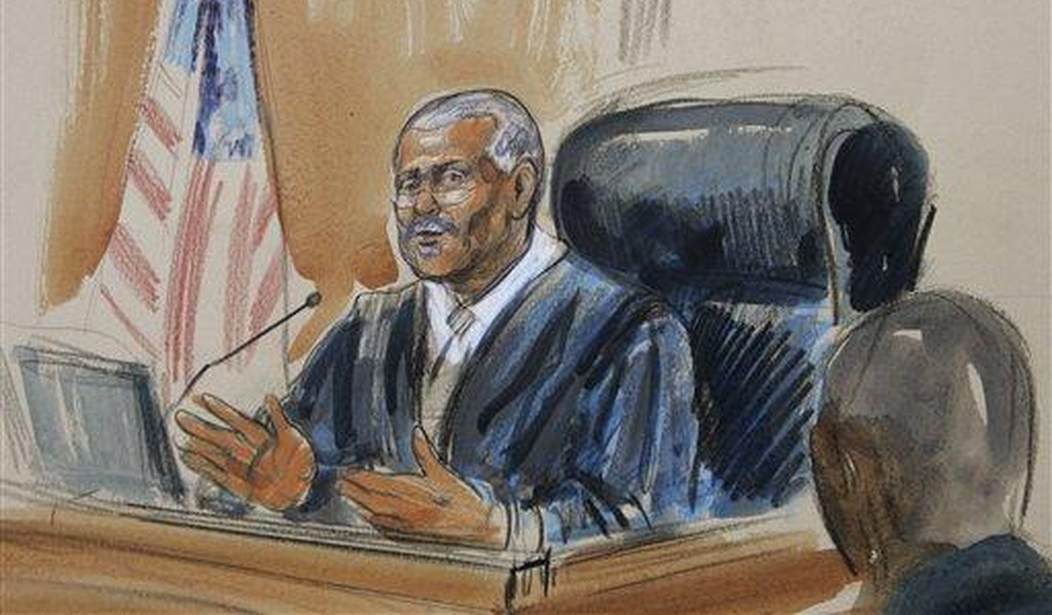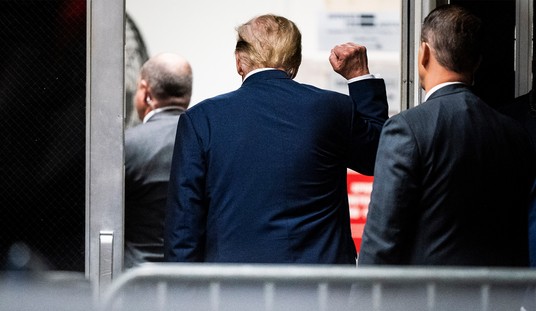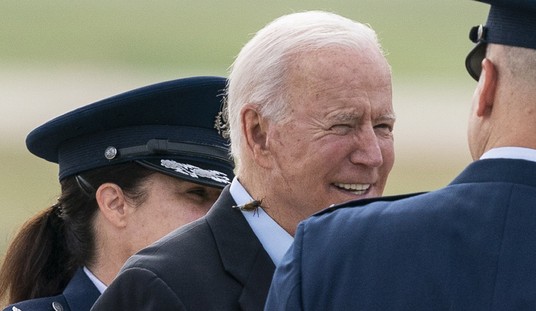DOJ needs to examine whether Judge Sullivan’s exercise of judicial discretion has been merely for the purpose of executing his role as an Art. III judge, or whether his actions are pretextual, designed to hide ulterior motives that are “clearly contrary to the interests of the public”. DOJ needs to inquire as to whether the unprecedented steps taken by Judge Sullivan — appointing amicus counsel to offer an argument in opposition to DOJ’s motion, selecting of Ret. Judge Gleeson to be that counsel in the immediate aftermath of Judge Gleeson’s OpEd in the Washington Post, Judge Sullivan’s inviting third-party amici to file briefs opposing the DOJ motion, and setting a schedule for considering the motion which provides no definitive “end date” to his inquiry — are all part of a pre-designed effort to extend the pendency of Gen. Flynn’s case past the election, and maybe into the term of a new Presidential Administration.
Maybe there is evidence of that, maybe there is not. But DOJ has “plausible executive questions.”
Maybe Judge Sullivan, Judge Wilkins, and Ret. Judge Gleeson would appreciate the “separation of powers” concerns raised by DOJ in its briefs filed on behalf of Gen. Michael Flynn if they considered for a moment a scenario where the “shoe was on the other foot.”
Both Judges claim that a “rule” of court procedure entitles a judge to conduct an expansive inquiry — with no definable standards or boundaries — into the thinking of DOJ officials in connection with the decision to seek the dismissal of the case filed by the Special Counsel’s Office (SCO) against Gen. Flynn.
The Reply brief filed on behalf of Judge Sullivan states:
The plain text of Rule 48(a) contradicts the government’s assertion that the Rule “does not authorize a court to stand in the way of a dismissal the defendant does not oppose.” Gov’t Br. 1.4. The rule preserves judicial authority to resolve motions to dismiss in all circumstances, requiring “leave of court” even where the defendant supports the motion. Fed. R. Crim. P. 48(a).
To argue that the text of Rule 48(a) does not preclude a court from “standing in the way” necessarily supports the same principle made as an affirmative assertion — Rule 48(a) authorizes a court to “stand in the way.”
But are there limitations on the grounds upon which a court can legitimately “stand in the way” — and how is DOJ supposed to determine if a court has only “legitimate” reasons, and not illegitimate reasons is it hiding from public view? Judge Wilkins inquired about just that kind of inquiry into DOJ motives in his offensive hypothetical posed to Dep. Sol. Gen. Wall during oral arguments when he asked about whether a court could look into undisclosed DOJ motives to dismiss prosecution of a case against a white cop for dismissing a black suspect.
Judge Gleeson proposes that Judge Sullivan examine the legitimacy of the reasons advanced by DOJ, and based on his determination decide whether to grant or deny the motion to dismiss. Judge Gleeson has asserted that a proper basis exists to conduct such an examination based on the history of DOJ filings and comments in the case against Gen. Flynn which are inconsistent with the reasons set forth in the DOJ motion to dismiss, so an inquiry is necessary to determine if the proffered justifications are legitimate, or merely pretextual and intended to cover up the fact that Gen. Flynn is a close political ally of Pres. Trump, and the motion has a political motivation rather than be motivated by “the public interest” or “the interest of justice.”
Well, if we are going to review the “history” of the participants in this matter, why would the history of statements and actions by Judge Sullivan be immune from scrutiny if the overriding consideration in such an inquiry is to determine whether public statements made can be examined as part of an effort to decipher current motives of those same participants?
I recall that Judge Sullivan accused Gen. Flynn of treasonous conduct in open court and on the record. Now, of course, he didn’t come right out and and say “You have committed treason” — but the implications of Judge Sullivan’s words weren’t lost on anyone who heard them or who has read the transcript. Judge Sullivan inquired of the SCO prosecutor whether they had considered if Gen. Flynn’s conduct — based on what Judge Sullivan believed the facts to be — amounted to treason. This was during what was supposed to be a sentencing hearing. At a sentencing hearing it is EXPECTED that the judge about to sentence a defendant in a criminal case KNOWS THE FACTS. It seems that maybe an inquiry about what Judge Sullivan understood the facts to be on the morning of that hearing is in order since Judge Sullivan was concerned that the SCO had not considered charges of treason against Gen. Flynn based the facts of the case. One of two things must be true: either Judge Sullivan understood the facts and he was accusing Gen. Flynn of treason, or he misunderstood the facts and mistakenly believed there were facts that might have warranted an inquiry into the issue of treason.
Or — maybe there is a third explanation. Maybe Judge Sullivan knew the actual facts, knew they did not implicate the law against treason no matter how illegitimately they were contorted, but his comment to the SCO prosecutor was really an indication of undisclosed bias against retired high ranking military officers.
Or maybe his comments were motivated by racial animus against Gen. Flynn, a caucasian male.
DOJ has “plausible executive questions” that need to be addressed, and examination of Judge Sullivan’s communications in the relevant time period seem a logical place to start.
Maybe answers can be found in the email communications between Judge Sullivan and his clerks. Or maybe Judge Sullivan and Ret. Judge Gleeson were in communication by email prior to the appointment of Judge Gleeson to be amicus counsel to the court.
Maybe Judge Sullivan provided directions to Judge Gleeson about the precise legal positions he wanted Judge Gleeson to take in the amicus filing. Maybe Judge Sullivan directed Judge Gleeson to propose an extended briefing schedule, and to propose a period of time during which Judge Gleeson would undertake an expansive “fact finding” exercise to be conduced by Judge Gleeson — with a staff of attorneys to assist him if necessary. This might include examination of DOJ documents, and requiring the submission of affidavits by DOJ current and former officials involved in the Flynn case. If necessary, Judge Gleeson might be authorized later to take live testimony under oath from those same officials in order to learn whether their proffered explanations were legitimate or a pretext.
But it’s also possible that Judge Sullivan’s overriding consideration expressed to Judge Gleeson in his communication is that the matter be extended without a determination on the motion beyond November 15, 2020.
Has Judge Sullivan been in recent contact via email with any former Obama Justice Department officials — such as former Attorney General Eric Holder? What might have been the subject of those communications?
DOJ has “plausible executive questions.”
It may be at the end of the day, once all avenues of inquiry are exhausted, it will turn out to be the case that none of these suspicions are well-founded, and Judge Sullivan has no ulterior motives for his unprecedented decisions in not granting the DOJ motion to dismiss forthwith, and in conducting this inquiry into whether undisclosed ulterior motives of DOJ are actually driving the decision to dismiss the case against Gen. Flynn.
But DOJ cannot be sure this is the case — too many facts are already apparent which overcome the “presumption of regularity” that would normally extend to judicial decision making on procedural questions in criminal matters — without utilizing the tools available to it to closely examine what Judge Sullivan has done up to this point in time. Subpoenas are one such tool.
After all, he cannot “stand in the way” of dismissal motion under Rule 48(a) if doing so is “clearly contrary to the interest of the public.”
DOJ has “plausible executive questions” on that question.













Join the conversation as a VIP Member